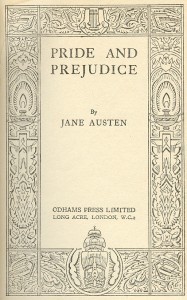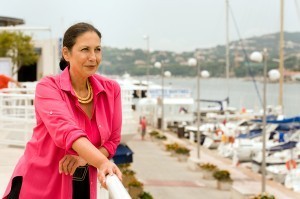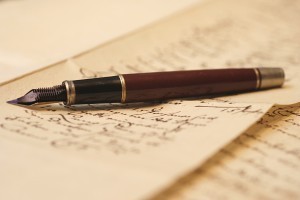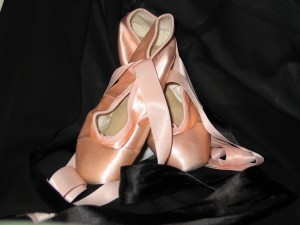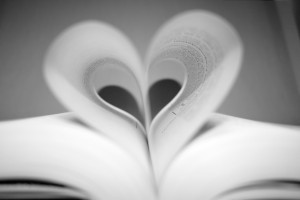Hannah Fielding's Blog, page 147
September 19, 2012
Answers to the Pride and Prejudice quiz
Which novel did Jane Austen write before Pride and Prejudice? Sense and Sensibility.
What is Darcy’s first name? Fitzwilliam.
In which county is Darcy’s estate, Pemberley? Derbyshire.
What was the original title of the book? First Impressions.
For how much did Jane Austen sell the book to her publisher? £110.
Which famous female English novelist wrote the following criticism of the book post-publication: “a carefully fenced, highly cultivated garden, with neat borders and delicate flowers; but … no open country, no fresh air, no blue hill, no bonny beck”? Charlotte Brontë.
Which of the following actors has not appeared in a screen adaptation of Pride and Prejudice: Laurence Olivier, Kate Winslet, Colin Firth, Jennifer Ehle, Keira Knightley. Kate Winslet.
Which ‘chicklit’ character was obsessed with Colin Firth as Darcy? Bridget Jones.
Which British crime writer released a book last year bringing murder to Pemberley? P.D. James.
September 18, 2012
A Pride and Prejudice quiz
I recently ran a poll to discover people’s ‘Most romantics’, and in the book category, Pride and Prejudice was the hands-down winner, with 57% of the vote (the runner up, The Notebook, received 24%). It is of course one of the most loved books in English literature of all time, and according to calculations in 7 September’s Bookseller, it’s sold somewhere in the region of 3.5 million copies in the past 199 years, placing it at number 11 of the chart of the top bestselling books of all time.
But how well do you know the book and its history? Take this quiz, and if you can answer all the questions correctly, leave a comment and I’ll post you a tube of Smarties! I will put up the answers tomorrow.
From first draft to publication spanned how many years?
Which novel did Jane Austen write before Pride and Prejudice?
What is Darcy’s first name?
In which county is Darcy’s estate, Pemberley?
What was the original title of the book?
For how much did Jane Austen sell the book to her publisher?
Which famous female English novelist wrote the following criticism of the book post-publication: “a carefully fenced, highly cultivated garden, with neat borders and delicate flowers; but … no open country, no fresh air, no blue hill, no bonny beck”?
Which of the following actors has not appeared in an adaptation of Pride and Prejudice: Laurence Olivier, Kate Winslet, Colin Firth, Jennifer Ehle, Keira Knightley.
Which ‘chicklit’ character was obsessed with Colin Firth as Darcy?
Which British crime writer released a book last year bringing murder to Pemberley?
September 17, 2012
Romance novels and the damsel in distress
The phenomenal success of Fifty Shades of Grey has brought romance (of the erotic variety) into the public eye. The book series has sparked all sorts of discussions over feminism/anti-feminism in terms EL James’s plot and characterisation.
It got me to thinking about romance stories, and about the balance of power in them. Is there still room today for a damsel in distress in a romance novel? Is it accepted? Is it an integral part of romance, or a castback to a bygone era?
I think women have always been drawn to strong female characters. As an author, I know that the characters I write have to engage a reader – the reader must connect to them, and empathise with them – and this simply would not happen were I to create feeble, pathetic characters. Plus, I’ve no desire to create heroes and heroines that I do not admire and like myself!
But how far, as a romance author, do you take characterising your heroine? Must she be an ardent feminist, and demand equality with the hero in all respects to the point of never letting him shelter her, protect her, help her, save her? Can she ever melt into his arms; enjoy the fact that he is larger, stronger; wobble in the face of danger and be held up in his embrace?
I think there are areas in which, as author, I must ensure my heroine is strong, courageous, independent and free. So Coral in Burning Embers, for example, is a freelance photographer with a great career; is brave enough to start a new life in Africa; is unafraid to be mistress, alone, of a plantation; and gives as good as she gets when it comes to sparring with Rafe and looking after herself.
But when we read a romance novel, is not part of the appeal the romance – the yearning for a strong male who can challenge a female on her own terms, but also be virile and protective and yes, rescue her when she is in distress? When I read a romance novel, I love a fiery, headstrong, independent heroine, but I also love the moments when she is vulnerable and will allow the man to be her mate in the most primitive sense and look after her. But – and this is the most important part – in return, so too will the hero allow the heroine to ‘rescue’ him when required; he too will show vulnerability. So, for example, in Burning Embers Coral has a car accident, and it is Rafe who finds her and cares for her. But later in the book, Rafe is desperately ill with malaria, and then it is Coral’s turn to save him.
Every lasting relationship is based on balance, and this, I think, is the key to the modern romance novel. We need a touch of vulnerability, and a backbone of strength; a world of opportunity, and a desire to stay rooted; an abundance of freedom, and a tie to another; an ability to stand alone and fend for oneself, but also the humility to accept help when it is needed. Women do not need to be saved, and neither do they need to be dominated; but sometimes, just sometimes, the greatest love can bloom out of allowing another to be the stronger one.
September 15, 2012
A beach for daydreaming
Ste Maxime beach, a lovely sandy beach that is within walking distance of my home. I often spend the afternoon here watching the boats come in and out of the harbour.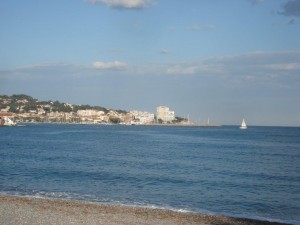
September 14, 2012
Why do we write?
The great American writer Ernest Hemingway said, “There is nothing to writing. All you do is sit down at a typewriter and bleed.” Writing, indeed, is hard work. The countless hours you put into dreaming and researching and planning and writing and revising and writing and revising (not to mention editing, proofreading and then the publication process). The experience is exhilarating, but also mentally and emotionally draining; one can become so caught up in a literary world and in the lives of characters that the veil between reality and dream dissolves. And then comes the difficulty of sharing your writing with the world…
So why, given the nature of the activity, do writers write?
For me, and I think for many writers, the desire – no, the need – to write began at an early age. Stories create story creators. The tales I heard on the lap of my governess, and the books surrounding me throughout my childhood, were enchanting and inspiring. Then, once I was of age to learn to write myself, and I came to understand that perhaps I too, some day, could write the stories I loved to hear, there was a click inside, and my entire being gravitated from that point on to the dream of writing.
From the time I could first hold a pen and control it sufficiently to create letters on a page, I have written. For me, it is an escape from the world, and a way to make sense of it. But it is more as well – it is a way to capture an essence, of life, of love, of feeling, of eternity. Writing is life itself, life embodied. Carlos Fuentes put it in stark terms: “One wants to tell a story, like Scheherazade, in order not to die. It’s one of the oldest urges of mankind. It’s a way of stalling death.”
When I write, there is a freedom and a feeling of sheer joy that overcomes me. I shape the dreams in my mind into something tangible, something I can share with others. For of course the audience is there, and is important. Some writing is for myself; a way to process thoughts and experiences. But I discovered, as a teenage girl circulating my romantic stories among classmates, that in addition to the joy of writing there is another delight: that of entertaining an audience. Leo Rosten wrote: “A writer writes not because he is educated but because he is driven by the need to communicate. Behind the need to communicate is the need to share. Behind the need to share is the need to be understood.” I would add to that, “the need to be understood, and to understand.”
I think, overall, I write because I want to live in a world in which romance exists in abundance. Were every romance book that was ever written pulped, and every romance author to become cynical and switch to writing dark thrillers, the world would be a shade greyer. We need heroines and heroes. We need tales of love overcoming the obstacles. We need passion and compassion and happy-ever-afters. We write not so much to educate, as to comfort, inspire, share, collectively dream.
Asking why writers write is much like asking why people breathe. We have to. It is our means of living.
September 13, 2012
Ste Maxime Harbour
September 11, 2012
The dreams and imaginings of four little girls
I owe my passion for romance writing to various sources of inspiration, from my parents teaching me about the arts to my education in French literature and the many places I have seen and experienced on my travels. But an important inspiration for me was a childhood lost in my imagination.
My governess sparked my love of storytelling, for she told the most amazing tales full of drama and passion and intrigue. She told me she was a widow, her husband having been crushed by a falling horse, which I thought was terribly tragic. My mother was not convinced that all of Zula’s tales were true, but I was entranced. Indeed, the only discipline Zula ever needed to lay down to get my sister and I to behave was threatening not to continue a story – I would burst not knowing the conclusion.
Then my sister Anissa and I befriended two sisters, Colette and Miguèle, who even at our tender years were similarly romantic and we drank in Zula’s stories and added to them those from our own imaginings. We were keen ballet dancers, and at the age of eleven we put together a three-hour show for friends and family. We chose the music, choreographed the dances, and designed the clothes, and it was a great success. It remains one of the best memories of my childhood; how I loved the romance of the ballet.
Then, in my teenage years, disaster struck: my best friends Colette and Miguèle moved away. I was terribly sad. But before they left we agreed to write to each other, and we took that promise very seriously. So commenced years of co-writing stories. We would each start a story – a romance, usually involving film and television stars of the day – and we would stop at a certain point and pass the story on. All our daydreams fuelled by our daily experiences and the cultures in which we were immersed were poured onto the page, and over time we built up a large collection of stories. By this point I was circulating my own romance stories in class at school, to the delight of my classmates and the irritation of the nuns who taught me!
Creating and writing down romance stories, then, has been second nature to me since my early childhood. Once Colette and Miguèle and Anissa and I gave up our collective story writing, there was a sadness to letting go of this aspect of my childhood. Had I only known then that one day I would write my own books – how excited I would have been!
I owe a lot, therefore, to the dreams and imaginings of four little girls: Les Quatres Rayons de Soleil as we were known (The Four Rays of Sunshine). And as Walt Disney once said, ‘If you can dream it, you can do it.’
September 10, 2012
Musing Mondays: Taking Notes
Musing Mondays is a weekly meme hosted by Miz B at Should be Reading. Each week she poses a question related to books. This week’s question is:
Do you take notes while you read?
For me, it really depends on what I’m reading. If it’s a novel, I may get lost in the story. If it’s non-fiction, I’m likely reading the book as part of research for my next novel, which means I scribble away as I read – in a notebook, not on the pages. I keep a notebook with me all the time; the very act of writing by hand is inspirational, I find. Whatever sparks an idea, be it a film, an artwork, a sunset or a book, I reach for the notebook and jot it down. I even keep a torch by my bed so I can located my book in the night without waking my husband if inspiration strikes in that dreamy place between sleep and consciousness.
The romance of dance
I love dance. I love ballet and flamenco and folk dancing. As a young girl I dreamed of being a ballerina; now I am content to watch and be swept away by the beauty of a dance.
For me, dance in all its forms is wonderfully romantic, because it is an expression of emotion. Take this extract from my book Burning Embers:
The overture was dramatic, evoking the crack of thunder and torrential rain; stage lighting gradually turned from red to gold, conjuring the breaking of daylight. Two sculptural figures became outlined against flashes of lightning: a man and a woman, naked except for a most exiguous loincloth, like the first humans at the dawn of time — alive but not yet awake.
The music built to a crescendo together with the humming of the chorus, and the dance opened. As the sun began to rise, the man reached out to the woman, and they clasped hands. He cradled her, and languidly they lifted themselves up to their feet, their bodies brushing, their eyes lost in each other’s. Sensuously, deliberately, they danced, moving as though they were one, their body language smooth as their limbs carefully unfolded. They twirled and rocked, intertwined and separated, nearly leaning onto one another but barely touching, their movements sometimes tender, sometimes almost violent. The man’s erotic movements against his partner were at first tentatively inviting, then inciting, before becoming more and more demanding and forceful. The woman was hesitant and shy to start off with, then increasingly yielding as his caresses seemed to excite her. As she watched, Coral felt contrasting emotions ignite in her as the furious energy of the dance alternated with sudden scenes of silence.
Finally, clasped together, making full contact for the first time, the couple swayed and spun around the stage in a flowing wave motion to the provocative rhythm of the music. As the frenzy reached its paroxysm, the orchestra’s fury intensified and stopped. Moments passed while the dancers held tight to each other, as though their bodies were melting together. The expression on their features as they lifted their faces to the sky was one of unimaginable joy. The show had come to an end. The dancers, still panting, their bodies glistening with sweat, took their final bow from an audience who were stamping, shouting, and throwing flowers at them in appreciation of such masterful art.
Rafe has taken Coral to see this passionate, sensual dance on a date, and it has the desired effect: by the end of the evening they have shared their first kiss.
There is something special about dance that transports us into another world: the language of the body is powerful, transformative. I wonder whether more young women than young men dance because more young women than young men are openly romantic? I think of the film Billy Elliot, about a young man’s journey to become a ballet dancer, and the opposition he faces, and I think the problem for him is largely that dance is seem as a feminine medium of expression for the very reason that it is emotion, romance, incarnate.
In the books I write, I like to create cultured heroes and heroines, and I shape male protagonists who are appreciative of dance. Rafe in Burning Embers runs a nightclub and is involved with a dancer there, so affected is he by the art form. And while Coral struggles with her jealously of Rafe’s dancer, she cannot help but be stirred by the wonderful dance show she sees on her date with Rafe. I love people who love dance. I love people who are unafraid to dance like nobody is watching. And so I love to create character with similar joie de vivre.
For dancing is just that: joy. Lord Byron said, ‘On with the dance! Let joy be unconfined’, and Frederick Nietzsche ‘would believe only in a God that knows how to Dance’. But Havelock Ellis has the final word: ‘Dancing is the loftiest, the most moving, the most beautiful of the arts, because it is no mere translation or abstraction from life; it is life itself.’ Life is for loving, and life is for dancing; thus the two are inextricably intertwined.
September 8, 2012
The most romantic gift
I recently ran a question survey via SurveyMonkey and Goodreads to discover people’s ‘most romantics’. For the question ‘What is the most romantic gift?’, the results were as follows:
Book: 38%
Jewellery: 28%
Flowers: 25%
Lingerie: 9%
Given that I ran one part of the survey on Goodreads, I expect many participants are book lovers! If you are not a book lover, I am sure the jewellery and/or flowers will do nicely instead.
That a book can be the most romantic gift may be a surprise, because of course we associate romance with gifts like flowers and chocolates. But I think the whole point of a romantic gift is that you are saying to someone, ‘I love you, and I wanted to show that I love you by giving you something that, knowing you as I do, I think you will like.’
The romantic book gift may go either of two ways:
Your partner gives you a book you’d really like to have. If you’re passionate about horror stories, for example, your partner could buy you the latest release from your favourite writer; or perhaps he sources a special edition of Frankenstein. Your partner may remember you talking about a book you’d like to read, or think that because you enjoyed the film, you’ll love the book. Even better is when the gift is unique in some way – a first edition or signed edition, for example. A perfect gift can be tracking down a book someone remembers from the past that is no longer in print; I recommend http://www.abebooks.com/ for hunting down vintage books.
The book itself is romantic. It’s a collection of romantic poems (I’ve always loved Elizabeth Barrett Browning), or a classic romance novel like Pride and Prejudice, or perhaps even a children’s book that conveys the message ‘I love you’. Or, even better, it’s a handmade book or one created personally through a platform like Blurb.com. Or perhaps a piece of book art, or one that is special beyond the words – an intricate pop-up book, say. Or a book your partner has had written just for you.
The possibilities are endless, and so inspiring! Whatever the book, because of the spirit in which it is given, it is one you will treasure forever. And that, I think, is precious and much longer-lasting than a bunch of roses or a box of caramels. Or a diamond ring? The survey says yes, but I confess I do also adore jewellery…

